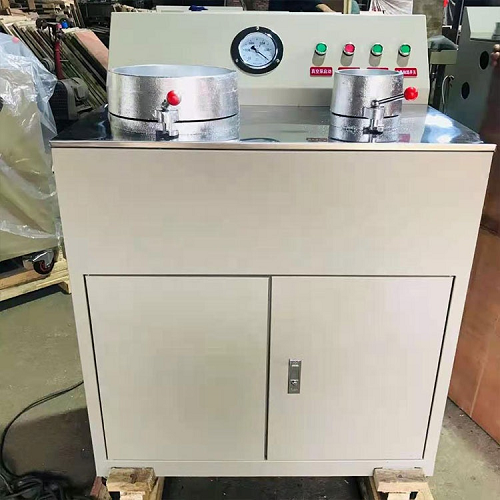In the final stage of mineral processing, achieving efficient solid-liquid separation has long been a technical challenge for many concentrators. Traditional filtration equipment often faces issues such as insufficient processing capacity, high energy consumption, or poor adaptability. The emergence of the disc vacuum filter has provided an innovative solution to this problem. The reason this filtration equipment stands out in various mineral processing scenarios lies in its unique working principle.
The equipment generates negative pressure through a vacuum suction system, allowing liquid in the slurry to pass through the filter cloth while solid particles are retained to form a filter cake. The entire filtration process operates continuously and automatically, from feeding and filtration to discharge, without manual intervention, significantly improving production efficiency.

In the field of iron ore processing, the disc vacuum filter demonstrates remarkable advantages. It efficiently handles dewatering operations for concentrates such as magnetite and hematite, not only offering large processing capacity but also maintaining filter cake moisture below 10%. This moisture level is critical for subsequent transportation and storage, as excessive moisture not only increases logistics costs but may also affect sintering or pelletizing processes.
For concentrators processing non-ferrous metal ores such as copper, lead, and zinc, the corrosion-resistant performance of the disc vacuum filter is particularly valuable. These ores often involve acidic or alkaline reagents during flotation, which can damage ordinary filtration equipment. However, high-quality disc vacuum filters use special anti-corrosion materials, ensuring long-term stable operation. More notably, they can also be integrated with pressure filtration systems to further reduce filter cake moisture.
In the non-metallic mineral sector, such as phosphate, fluorite, and quartz concentrate dewatering, the disc vacuum filter also performs exceptionally well. To address the fine particle size of these ores, the equipment can be equipped with high-precision filter cloths to effectively prevent fine particle loss. Its modular design facilitates daily maintenance and cleaning, significantly reducing downtime.

The coal industry is another important application area for disc vacuum filters. In coal preparation plants for clean coal dewatering and slime recovery, it demonstrates unique advantages in handling viscous materials. Compared to traditional belt filters, it consumes less energy and operates more stably, saving substantial production costs for coal enterprises.
Compared to traditional filtration equipment, disc vacuum filters exhibit clear technical advantages. They not only enable continuous production but also far exceed the processing capacity of batch-operated plate-and-frame filter presses. In terms of automation, they are far superior, completely eliminating the cumbersome manual discharge process. Moreover, they can adapt to a wide particle size range from 0.01 mm to 1 mm, a feat difficult for other types of filtration equipment to achieve.
To fully leverage the performance of disc vacuum filters, several key points must be noted. Filter cloth selection is crucial, requiring the appropriate material and precision based on the characteristics of the processed material. Vacuum level adjustment is also important, as finer particle slurries require higher vacuum levels. Additionally, optimizing the rotation speed of the filter discs can achieve the best filtration results for different materials.
With advancements in mineral processing technology and increasing environmental requirements, disc vacuum filters continue to evolve. New models feature improvements in energy efficiency and intelligent control, providing concentrators with more economical and efficient dewatering solutions. For mineral processing plants seeking filtration equipment, a deeper understanding of the performance characteristics of this equipment may reveal new opportunities to enhance production efficiency.







